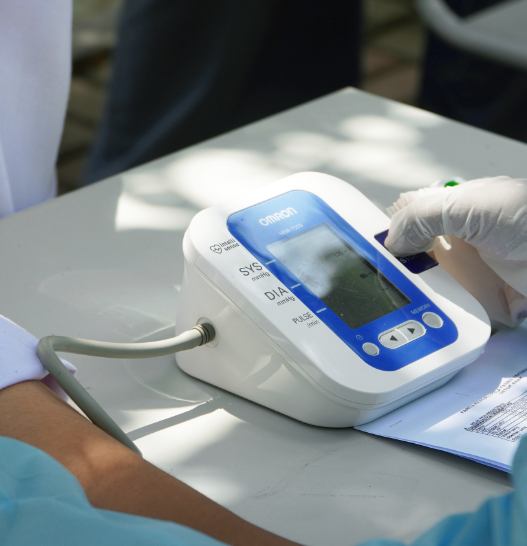What will change for you as a manufacturer of IVDs when the IVDR comes into effect? Do you have an IVD on the market and don’t know what you need to accomplish when moving to the IVDR? Are you looking to bring a new IVD to market and are unsure how to meet the overall safety and performance requirements of the IVDR? Do you need Usability Engineering for your IVD?
If you are asking yourself one or more of these questions, then you have come to the right place. In this article, we provide you with an overview of the most important innovations of the IVDR compared to the IVDD and tell you how Usability Engineering can help you to implement many of these innovations according to the requirements and to prove this implementation.
Commencement of validity of the IVDR
The In-vitro-Diagnostic Device Regulation was introduced together with the MDR and has since replaced the IVDD.
The transition periods that allow you to upgrade IVDs that already have a clearance from IVDD to IVDR standard have been extended, but will expire over the coming years.
If you introduce a new IVD to the market now, you already have to comply with the IVDR and its regulations.
For manufacturers, distributors and also importers of IVDs, the IVDR changes quite a lot. In the following text, we would like to give you a brief overview of the most important changes and show you why Usability Engineering is more than just a big help here.
Let us now come to some of the most important changes of the IVDR compared to the IVDD.
Upgrade from IVDD to IVDR in time.
Depending on the class of your IVD, you have until May 26, 2027 at the latest to bring already cleared products up to IVDR standard. The bottlenecks at Notified Bodies and the new requirements for classification, performance and safety, as well as the increasing documentation burden, are just a few reasons why you should start upgrading to the IVDR as soon as possible.
Here are the transition periods at a glance:
- Class A (non-sterile products): May 26, 2022.
- Class A (sterile products): May 26, 2027.
- Class B: May 26, 2027.
- Class C: May 26, 2026.
- Class D: May 26, 2025.
The documentation effort increases
As you will see from the following points, the IVDR requires a lot more from you than the IVDD did. Accordingly, you must provide the Notified Body with evidence that you have implemented the requirements in accordance with the standard for all new regulations. It is advisable to carefully document your efforts to comply with the IVDR right from the start.
But you also have to provide evidence after the development process in the course of post-market surveillance. Here, too, the documentation effort for you has increased enormously compared to the IVDD.
If you document correctly right from the start or get an external partner on board to provide this documentation, you have already saved a lot of effort here.
General safety and performance requirements. What changes from IVDD to IVDR?
The general safety and performance requirements of the IVDR are much more comprehensive than those of the IVDD. The catalog of requirements is also more precise and more strictly formulated.
Thus, we count 59 sub-points of the requirements of the IVDR that are the same or very similar to the IVDD. Another 50 sub-points have become stricter or have been formulated more precisely in contrast to the IVDD. And 84 sub-points are completely new and without equivalent in the IVDD. The requirements apply to all IVDs, regardless of the risk class.
An overview of the IVDR’s requirements for Usability Engineering can be found in our article “IVDR and Usability – do they belong together?“.
Many of the new points relate to the safe use of IVDs. You can demonstrate the following points with Usability Engineering:
- It is determined which user group is intended for the IVD.
- The intended purpose of the IVD is clarified.
- It is tested and proven that the user group can also use the product safely and efficiently according to the intended purpose.
- The environment of use is also included.
- In the case of self-testing, proof is provided that lay users can operate the product safely and interpret the test results without error. This sub-point is very important for Corona rapid tests, for example.
The exclusion of potential errors and misuse.
Doppelte Belastung für Benannte Stellen
Whereas under the IVDD about 20% of IVDs had to get the clearance by a Notified Body, under the IVDR it is now about 80% of products (source). The need for Usability Engineering for IVD products has thus increased dramatically.
The requirements for the Notified Bodies themselves have also increased as a result of the IVDR. Accordingly, you have to apply again for clearance of your product and prove that your staff will be retrained accordingly. This can of course take some time.
Accordingly, the changeover from IVDD to IVDR will lead to some bottlenecks here. Initially, there will still be fewer Notified Bodies, but they will be confronted with a greatly increased load of applications for clearance.
For many manufacturers of IVDs, dealing with a Notified Body is completely new territory. Accordingly, it is worthwhile to get help here and to obtain external expertise on dealing with the Notified Body and the associated requirements.
New classifications of IVDs and their implications.
Under the IVDR, the old IVDD list system has become obsolete. IVDs are now divided into four classes, ascending by criticality.
Class A:
- At most, a very low risk during use.
- A distinction is made between sterile and non-sterile products.
- Common example: Instruments and sample containers for laboratory use.
Class B:
- Misdiagnosis has no life-threatening risks.
- Common example: a blood glucose meter.
Class C:
- Misdiagnosis of a class C IVD is associated with life-threatening risks.
- Common example: an EGF receptor in lung cancer.
Class D:
- Here, the focus is on highly critical measured values.
- Highly infectious and potentially fatal diseases are determined with Class D IVDs.
- Common examples: Corona tests or HIV tests.
To find the right class for your IVD, you need to be aware of the intended use including the intended user groups. The safety and performance requirements of the IVDR can only be met and demonstrated to be met, if the correct user group has been tested to prove that it can meet the intended use safely and efficiently.
The intended purpose of the IVD and the designation of the intended user group are therefore of great importance due to the launch of the IVDR. With Usability Engineering you not only define both, you also prove that the user group can also use the IVD effectively and safely according to the intended purpose.
The categories of IVDs according to the IVDR
In addition, the IVDR now distinguishes among the following types of IVDs. Here, the intended purpose of your IVD plays a major role in the classification.
Near Patient Testing: These IVDs are used by healthcare workers near patients. Here you must demonstrate that they are safe to use and will not cause harm to users, patients or bystanders.
IVDs for self-testing: Here you must demonstrate that laypersons can use the IVD safely and efficiently with the available information in the package insert and that the test results can also be interpreted without error.
Companion diagnostics: These test the effect of certain drug treatments. Here, in addition to safety and efficiency, you must ensure that misinterpretations can be ruled out.
IVD Software: If the intended use of the software is for medical purposes, you must also comply with the safety and performance requirements of the IVDR.
To demonstrate safe and effective use for each type of IVD, you may need to create appropriate testing conditions to obtain valid data. Recruiting the right user group also requires some experience and sensitivity.
Post-Market-Surveillance and Performance Evaluation Report
Another major change in the IVDR from the IVDD is the post-market surveillance requirements for your IVD. You are now under a stronger obligation to consistently collect data for post-market surveillance and summarize it in a Performance Evaluation Report.
You now have to prove that your product can be used safely and effectively throughout its entire life cycle. You therefore need user data and must also document this correctly. Here, too, a partner for Usability Engineering can make your life a lot easier.
If you want to know how to prepare the Usability Testing for your IVD we recommend our article “How to prepare your Usability Testing for IVDs“.
Conclusion
The new classification rules for IVDs and the general safety and performance requirements of the IVDR present you with some challenges. Not only do you have to consider far more than with the IVDD, you are also required to perform and demonstrate Usability Engineering for your IVD.
How does moving from IVDD to IVDR affect you? What is your specific case? Comment on this post or get in touch via our contact form. We look forward to hearing from you.



